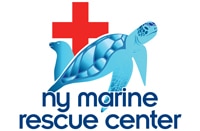Our Initiatives
Efforts We Can All Make To Better Our Marine Environment
Make a Donation
Volunteer
Our Initiatives
Efforts We Can All Make To Better Our Marine Environment
Make a Donation
Volunteer
Seals pup in our region from February (gray seals) through the spring (harbor seals). It’s quite common to see a seal pup resting on the beach alone.
There is no selfie stick long enough!
As tempting as it might be to get that perfect shot of yourself or your child with an adorable seal pup, please do the right thing and leave the seal pup alone. Getting too close to a wild animal puts you—and the animal—at risk. Seals have powerful jaws, and can leave a lasting impression. We have received reports of a number of injuries to humans as a result of getting too close to an animal during a quick photo op. When you get too close to a wild animal, you risk stressing or threatening it, and stressed animals are much more likely to act unpredictably.
Normal Behavior
It is normal for a mother seal to leave her young pup alone on the beach for up to 24 hours while she feeds. You may not see the mother offshore, but if she sees you near her pup, she may not think it’s safe to come back. It might only take a few seconds for you to snap the photo, but the mother may abandon her pup if she feels threatened. For the seal pup, the consequences can be devastating.
Give Them Space
If you see a seal pup, keep your distance. As a rule of thumb, stay at least 50 yards (150 feet) from seals. A curious seal pup might approach on its own, but the mother is likely to be nearby, and may see your interaction as a threat.
“The best thing you can do if you want to help is keep away from the animal and keep your pets away from it, so the mother has a chance to return,” says Mendy Garron, marine mammal stranding program coordinator for NOAA Fisheries Greater Atlantic Region.
The Rules
Approaching a wild animal can be considered harassment, which is an illegal activity. Under the Marine Mammal Protection Act of 1972, harassment is defined as “any act of pursuit, torment, or annoyance” which has the potential to injure or disturb a marine animal. This can be dangerous for the animal, but can be dangerous for you, too.
How to Help
If you think an animal may be in trouble, there are things you can do:
- To report a stranding, please call our stranding hotline at (631) 389-9829 or the NOAA Fisheries Northeast Regional 24-hour hotline 866-755-NOAA (6622).
- If you see someone harassing a marine mammal, please contact NOAA’s Office of Law Enforcement at 800-853-1964.
- Always maintain a safe distance, at least 150 feet, from the animal to avoid injury to yourself or injury to the animal.
Current Initiatives
Boaters, Look Out!
Our Initiatives Efforts We Can All Make To Better Our Marine EnvironmentMake a DonationVolunteerOur Initiatives Efforts We Can All Make To Better Our Marine EnvironmentMake a DonationVolunteerA reminder to all boaters that marine animals like sea turtles, which come to the surface to...
Pick It Up!
Our Initiatives Efforts We Can All Make To Better Our Marine EnvironmentMake a DonationVolunteerOur Initiatives Efforts We Can All Make To Better Our Marine EnvironmentMake a DonationVolunteerMarine debris is adversely affecting marine animals at an alarming rate. The New York Marine...


